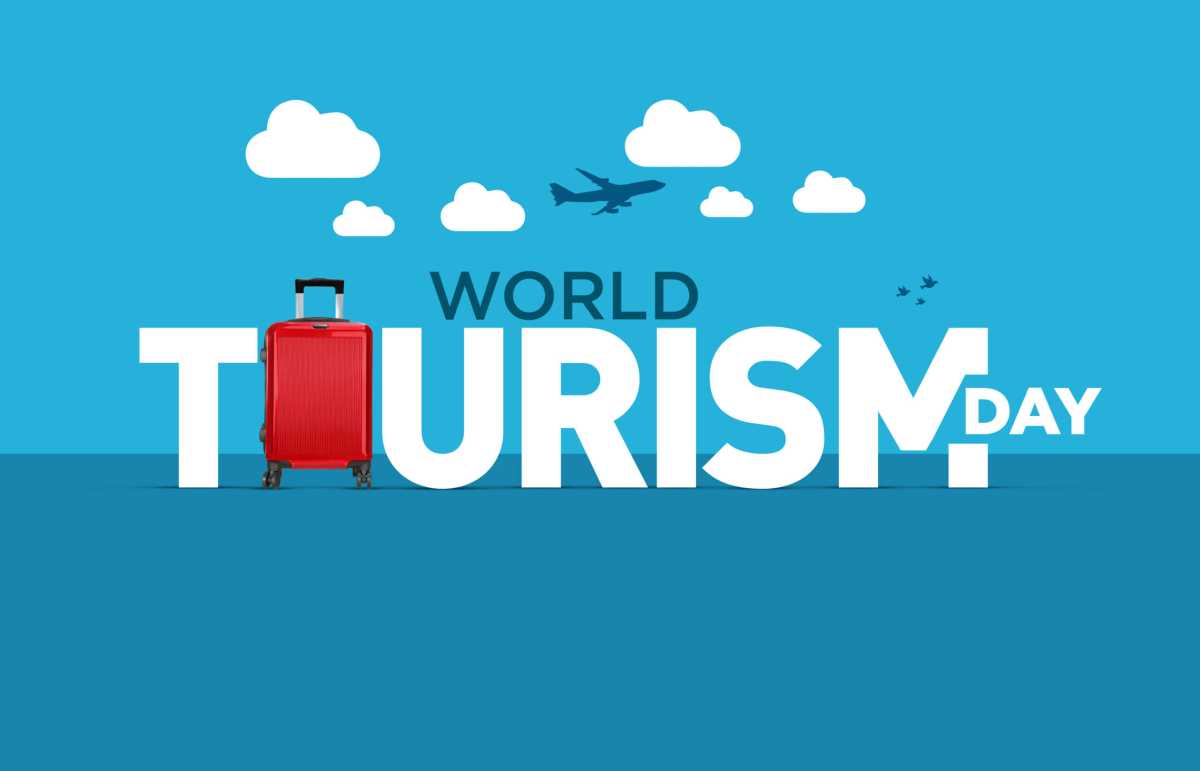Every year on Sept. 27, we celebrate World Tourism Day. This special occasion has been observed since 1980 and commemorates the adoption of the Statutes of the Organization in 1970, which paved the way for the establishment of the United Nations World Tourism Organization (UNWTO). This year, the theme is “tourism and green investments.” At the Caribbean Biodiversity Fund (CBF), we’re passionate about activities and initiatives that have a green focus — ensuring that the natural beauty of the Caribbean can be preserved for generations to come. Recently, we signed a Memorandum of Understanding with the Caribbean Hotel and Tourism Association (CHTA) and the Caribbean Alliance for Sustainable Tourism (CAST) aimed at jointly promoting the conservation, protection and management of biodiversity and natural resources in the Caribbean.
Making the Case for Sustainability on World Tourism Day 2023
Why is this so important? Well, not only is it essential for the environment, but it’s also crucial for the Caribbean’s economy. Many Caribbean nations rely heavily on tourism, with the travel and tourism sector contributing over 39 billion U.S. dollars to the region’s GDP in 2021. However, the COVID-19 pandemic taught us a valuable lesson about the vulnerability of this sector. In 2020, the Caribbean lost a significant portion of its GDP due to the pandemic’s impact, primarily because tourism, which makes up 14 percent of the GDP, plummeted by two-thirds.
As a lifeline for many Caribbean countries, tourism is not only pivotal to their economies but also supports employment, food production, and recreational opportunities. In fact, tourism accounts for a substantial share of many Caribbean economies, ranging from 7 percent to a staggering 90 percent of GDP in certain countries. It also provides direct employment for nearly 12 percent of the population and indirectly supports another 20 percent. Fortunately, we’re witnessing positive trends in tourism’s recovery, with some Caribbean nations even surpassing their 2019 records. By the end of 2022, tourist visits to the Caribbean had increased by a remarkable 50% compared to 2021 figures.
The Magnetic Pull of Caribbean Tourism
So, what makes the Caribbean such a magnet for tourists? It’s a paradise known for its tropical climate, white sandy beaches, and crystal-clear waters. Whether you’re swimming with sea turtles in Barbados or marveling at the majestic Pitons in St. Lucia or lounging on the pristine beaches of Punta Cana, the Caribbean offers a plethora of experiences for every traveler. Tourists are also drawn to the region’s cultural and historical sites, local cuisines, and, of course, the rum!
What truly sets the Caribbean apart though is its extraordinary biodiversity, including mangroves, iguanas, sea turtles, various bird species, stunning beaches, and majestic mountain peaks. This rich biodiversity is the beating heart of our tourism sector, attracting visitors year after year. But to ensure that tourists continue to flock to our shores, we must protect this natural heritage.
A healthy environment not only lures tourists but also serves as a vital resource for food production and acts as a natural barrier against waves, winds, and rain. Approximately 350 million people travel to our coral reefs each year, generating $9.5 billion in annual tourist expenditure in the Caribbean. Additionally, up to 100 million Caribbean residents benefit from coral reefs, with 41 million depending on them for their food and livelihoods. Our fish species rely on coral reef ecosystems for food, shelter, nurseries, and breeding grounds.
Caribbean Biodiversity and Tourism Go Hand in hand
The tourism industry and its partners recognize the importance of preserving biodiversity to maintain tourist numbers. Several initiatives supported by the CBF exemplify this commitment:
Fundación Grupo Puntacana, Dominican Republic: With five million tourists visiting in 2021, Punta Cana is one of the most popular destinations in the region. Through a CBF grant, Fundación Punta Cana has taken significant steps to protect the environment.
Serenity Dive and Dive Bequia, St. Vincent and the Grenadines: Local diving operators have received funding to establish coral nurseries and restore local coral reefs, using various coral species like elkhorn corals.
St. Lucia Divers Association-Anbaglo, St. Lucia: Supported by the St. Lucia National Conservation Foundation, this association is creating new dive and snorkel sites, establishing artificial reefs, and training youngsters in scuba diving and coral restoration skills.
Grenada Sustainable Development Trust Fund, Grenada: This fund supports infrastructure upgrades for eco-tourism activities in Dragon Bay Protected Area and Morne Gazo Nature Reserve.
Alloa Fisherman’s Co-operative Society Limited (Alloa), Jamaica: Alloa received funding from the National Conservation Trust Fund to develop sustainable tourism within the Discovery Bay Marine Protected Area.
These projects illustrate that the public and private sectors, even at the local level, are taking significant steps toward supporting sustainable tourism. Ensuring a sustainable tourism sector is a collective effort of all stakeholders involved.
How to be a Sustainable Tourist
But what can you, as an individual tourist, do to contribute to sustainable tourism and protect the Caribbean environment? Here are some tips:
Choose certified accommodations: Look for hotels and booking options that prioritize sustainability. The Caribbean Sustainable Tourism Awards can help you identify eco-conscious destinations.
Offset your carbon emissions: Flying is a major source of carbon emissions during holidays. Consider carbon offset programs offered by airlines to mitigate your impact. For instance, Wayaj Inc and the St. Lucia National Conservation Trust Fund have partnered on a Carbon Offset Project.
Support ethical wildlife tourism: Be mindful of encounters with wild animals advertised as tourist attractions. Ensure that such interactions are conducted ethically, without harm to the animals.
Seek out Green Fins certified dive operators: If you’re into underwater tourism, choose operators certified by Green Fins, which promotes responsible practices to protect coral reefs.
Eat local: Enjoy locally sourced produce, which not only supports local economies but also reduces the carbon footprint associated with imported food.
Use eco-friendly sunblock and insect repellent: These products can harm coral reefs, so opt for environmentally friendly alternatives.
Avoid souvenirs sourced from wild animals or plants: Respect the environment by refraining from buying products made from endangered species or natural resources.
Reduce single-use plastics: Bring your reusable water bottle, avoid littering and minimize your use of single-use plastics during your trip.
Your individual actions matter and contribute to a more sustainable Caribbean tourism industry. Let’s work together to protect this beautiful region for future generations to enjoy.
References
- Caribbean Tourism Organization. (n.d.). Sustainable Tourism Department – Awards & Competition Winners. Retrieved fromhttps://www.onecaribbean.org/our-work/sustainable-tourism-dept/awards-competition-winners/
- Little Lost Travel. (n.d.). How to Pick the Ultimate Ethical Travel Activity. Retrieved fromhttps://littlelosttravel.com/how-to-pick-the-ultimate-ethical-travel-activity/
- (n.d.). Why Eat Local Food? Retrieved fromhttps://www.healthline.com/nutrition/why-eat-local-food
- Green Fins. (n.d.). Find a Green Fins Certified Dive Operator. Retrieved fromhttps://greenfins.net/
- My Animals. (n.d.). Is It Wrong to Take Shells from the Beach? Retrieved fromhttps://myanimals.com/latest-news/is-it-wrong-to-take-shells-from-the-beach/
- Ecotourism World. (n.d.). Sustainable Travel: Take Only Photos, Leave Only Footprints. Retrieved fromhttps://ecotourism-world.com/sustainable-travel-take-only-photos-leave-only-footprints/






















